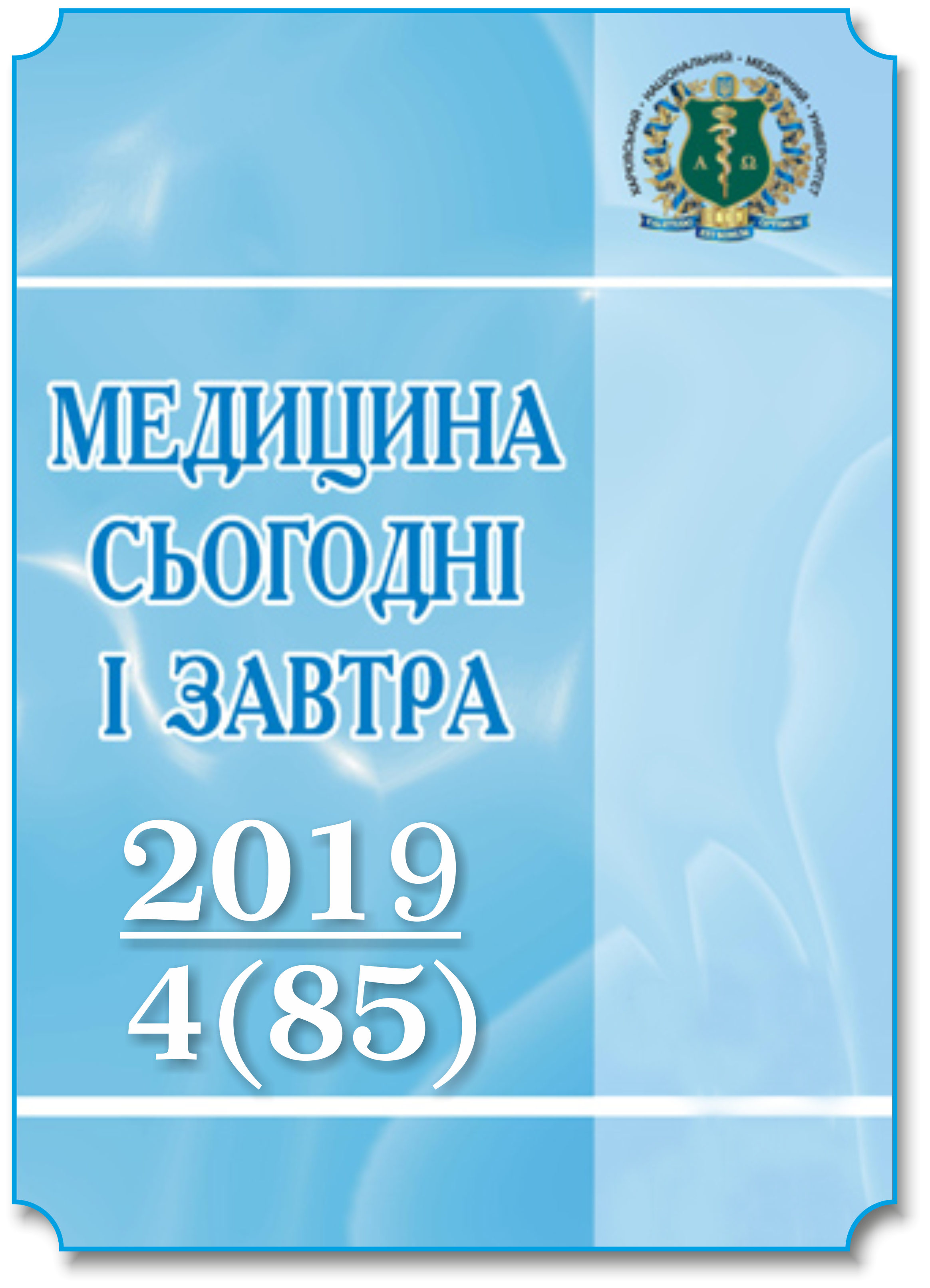Abstract
The levels of insulin-like growth factor I and endostatin in the blood serum and their relationship with lipid profile were investigated in patients with acute myocardial infarction and obesity. The object of the study was 105 patients. All patients were divided into two groups: group 1 consisted of patients with AMI and concomitant obesity (n=60), group 2 consisted of AMI patients without obesity (n=45). The control group consisted of 20 practically healthy people. The average age of patients in group 1 was (67.44±1.34) years old, and in group 2 was (66.85±1.72) years old. The content of IGF-I and endostatin was determined by the enzyme immunoassay. To determine IGF-I, an enzyme-linked immunosorbent assay was used using the Human Insulin like growth factor-I ELISA Kit (MEDIAGNOST, Germany). The endostatin level was determined by the enzyme immunoassay using the Endostatin Elisa Kit (BIOMEDICA, Austria). The biochemical study included the determination of the level of TC and HDL, carried out by the peroxidase method using a set of reagents «Cholesterol Liquicolor» from «Human» (Germany) in blood serum stabilized with heparin. The obtained correlations indicate that an increase in the level of endostatin in the blood serum is significantly associated with an increase in the levels of TC, LDL, TG, CA and a decrease in HDL. Also, reliable data were obtained on the feedback between IGF-I and the level of TC, LDL, TG and CA, as well as a direct relationship between the indicators of IGF-I and HDL. The data obtained indicate that endostatin as a marker of angiogenesis is associated with obesity and dyslipidemia, and also indicate the anti-inflammatory and antioxidant properties of IGF-I under conditions of high autoimmune activity.
References
Kovalenko V.M., Kornatskyi V.M., Moroz D.M. et al. (2016). Problemy zdorovia i medychnoi dopomohy ta model pokrashchannia v suchasnykh umovakh [Health and care issues and the model of improvement in modern conditions]. V.M. Kovalenko, V.M. Kornatskyi (Ed.), NNTS «Instytut kardiolohii imeni akademika M.D. Strazheska» NAMN Ukrainy. Кyiv: Drukarnia «Hordon», 261 p. [in Ukrainian].
Kovalenko V.M., Dorohoi A.P. (2016). Sertsevo-sudynni khvoroby: medychno-sotsialne znachennia ta stratehiia rozvytku kardiolohii v Ukraini [Cardiovascular diseases: medical and social significance and strategy of cardiology development in Ukraine]. Ukrainskyi kardiolohichnyi zhurnal – Ukrainian Journal of Cardiology, addition 3, Materialy XVII Natsionalnoho konhresu kardiolohiv Ukrainy – Proceedings of the XVII National Congress of Cardiologists of Ukraine, pp. 5–14 [in Ukrainian].
Gabriel V., Zamora A., Ramos R., Marti R. (2018). Acute myocardial infarction population incidence and mortality rates, and 28-day case-fatality in older adults. The REGICOR Study. Revista Espanola de Cardiologia, vol. 71, issue 9, pp. 718–725, DOI https://doi.org/10.1016/j.kint.2017.10.019.
Mathers C.D., Loncar D. (2006). Projections of global mortality and burden of disease from 2002 to 2030. PLoS Med., vol. 3, e442, https://doi.org/10.1371/10.1371/journal.pmed.0030442.
Yong W., Qi B., Xu J., Zhou G., Chen S., Ping O., Liu S. (2014). Age- and sex-related difference in lipid profiles of patients hospitalized with acute myocardial infarction in East China. J. Clin. Lipidol., vol. 8, pp. 562–567, https://doi.org/10.1016/j.jacl.2014.09.006.
Savastano S., Di Somma C., Barrea L., Colao A. (2014). The complex relationship between obesity and the somatropic axis: the long and winding road. Growth Horm. IGF Res., vol. 24, pp. 221–226.
Succurro E., Arturi F., Grembiale A., Iorio F., Laino I., Andreozzi F. et al. (2010). Positive association between plasma IGF1 and high-density lipoprotein cholesterol levels in adult nondiabetic subjects. Eur. J. Endocrinol., vol. 163, pp. 75–80.
Nelson S.M., Freeman D.J., Sattar N., Johnstone F.D., Lindsay R.S. (2007). IGF-1 and leptin associate with fetal HDL cholesterol at birth examination in offspring of mothers with type 1 diabetes. Diabetes, vol. 56, pp. 2705–2709.
Tian H.L., Chen H., Cui Y.H., Xu T., Zhou L.F. (2007). Increased protein and mRNA expression of endostatin in the ischemic brain tissue of rabbits after middle cerebral artery occlusion. Neurosci. Bull., vol. 23, pp. 35–40.
Hou Q., Ling L., Wang F., Xing Sh., Pei Zh., Zeng J. (2010). Endostatin expression in neurons during the early stage of cerebral ischemia is associated with neuronal apoptotic cell death in adult hypertensive rat model of stroke. Brain Res., vol. 1311, pp. 182–188.
Mitsuma W., Kodama M., Hanawa H., Ito M., Ramadan M.M., Hirono S. et al. (2007). Serum endostatin in the coronary circulation of patients with coronary heart disease and its relation to coronary collateral formation. Am. J. Cardiol., vol. 99, pp. 494–498.
Iribarren C., Herrinton L.J., Darbinian J.A., Tamarkin L., Malinowski D., Vogelman J.H., Orentreich N., Baer D. (2006). Does the association between serum endostatin, an endogenous anti-angiogenic protein, and acute myocardial infarction differ by race? Vasc. Med., vol. 11, pp. 13–20.
Kato Y., Furusyo N., Tanaka Y., Ueyama T., Yamasaki S., Murata M., Hayashi J. (2017). The Relation between Serum Endostatin Level and Carotid Atherosclerosis in Healthy Residents of Japan: Results from the Kyushu and Okinawa Population Study (KOPS). J. Atheroscler. Thromb., vol. 24 (10), pp. 1023–1030, DOI http://doi.org/10.5551/jat.39735.
Barroso M.C., Boehme P., Kramer F., Mondritzki Th., Koehler T., Gülker J.-E. et al. (2017). Endostatin a potential biomarker for heart failure with preserved ejection fraction. Arq. Bras. Cardiol., vol. 109 (5), pp. 448–456, DOI http://dx.doi.org/10.5935/abc.20170144.
Varbo A., Freiberg J.J., Nordestgaard B.G. (2018). Remnant cholesterol and myocardial infarction in normal weight, overweight, and obese individuals from the Copenhagen General Population Study. Clinical Chemistry, vol. 64, issue 1, pp. 219–230, DOI https://doi.org/10.1373/clinchem.2017.279463.

